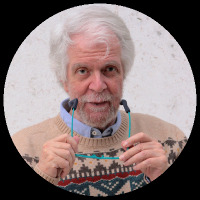
Jerzy Wilde
Full professor and head of the Apiculture Department, University of Warmia and Mazury in Olsztyn also Director of SME: Apiculture Centre Honey Bee Queen Breeding Wilde, Poland. Honeybee Queen Breeding Centre is running since 20 years focused on queen rearing (ca 25 000 queens each year) and instrumental insemination of queens. Special interest and skills: honeybee breeding, queen rearing, disease resistance. Interest and skills shared with bee biology.
less
Related Authors
Julian D Reynolds
Trinity College Dublin
Marc Champagne
Kwantlen Polytechnic University
David Seamon
Kansas State University
Jana Javornik
University of East London
Armando Marques-Guedes
UNL - New University of Lisbon
Kevin Arbuckle
Swansea University
Viacheslav Kuleshov
Stockholm University
Juana María Coronado-Blanco
Universidad Autónoma de Tamaulipas
Rfaki Abderrazak
Moulay Ismail University, Meknes, Morocco
RP Mainali
Nepal Agricultural Research Council (NARC)
InterestsView All (11)










Uploads
Papers by Jerzy Wilde